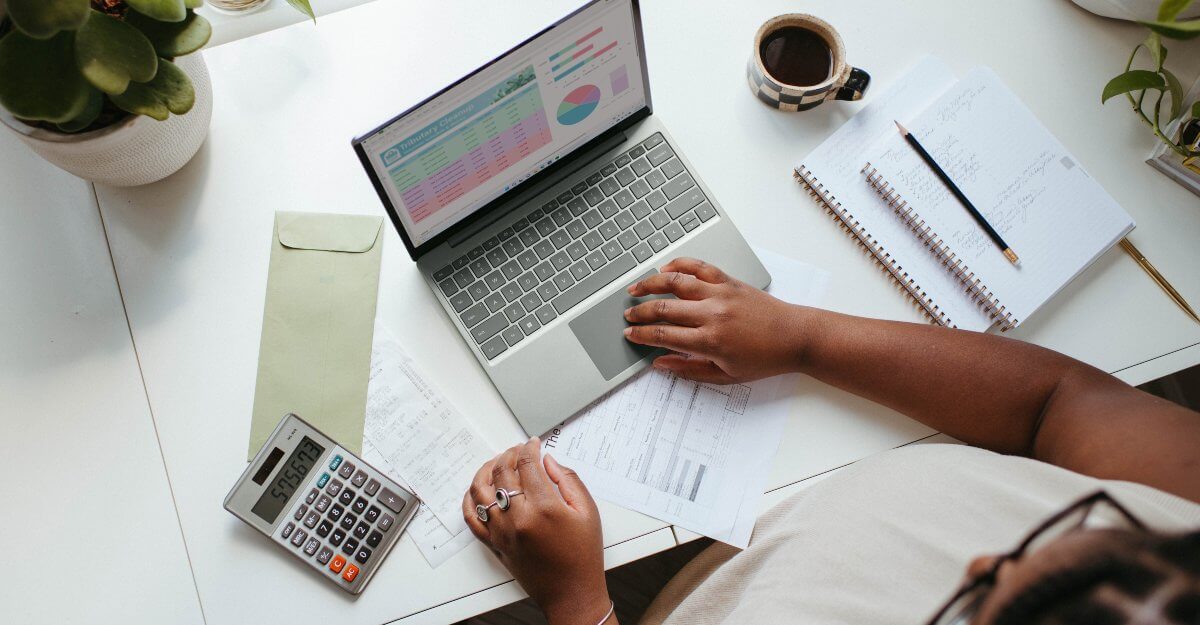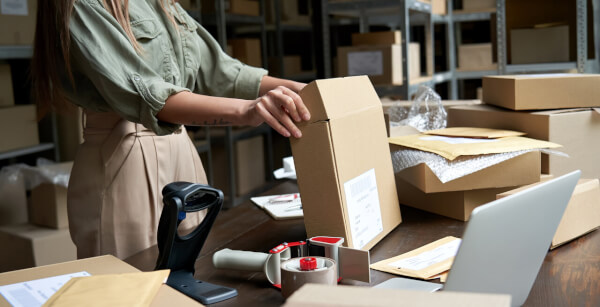Xero pricing Australia: Plans, costs & features guide
Explore Xero pricing in Australia. We break down all 4 plans, hidden costs, and features like payroll & multi-currency. Find more.

Looking to grow your business and reach more customers by selling on Amazon Australia? With 300+ million global users visiting the e-commerce site each month, it’s a great way to increase visibility and drive sales. Both locally and internationally.
In this guide, we’ll detail the essentials for getting started as an Amazon seller, covering products, prices, fees, and more.
There are also a few tips and tricks, like creating a free Wise Business account to receive your Amazon payouts in multiple currencies without the typical conversion markups.
| Table of contents |
|---|
How to sell on Amazon Australia? It’s simple. After registering your business as a seller, you then choose a selling plan — either Individual or Professional. From there, you can begin listing your products on the marketplace.
Amazon provides all the tools and information you need to create compelling product listings. You can also use your seller account to handle orders, track sales, manage inventory, and access data dashboards and reports for analytics.
When a product sells, you can either ship it yourself or let Amazon do it through the FBA (Fulfilment by Amazon) service. And finally, at regular intervals, you’ll receive payments from Amazon for the products you’ve sold.
Here’s a quick step-by-step guide for what to expect:
Most businesses can sell on Amazon. However, you will need to provide a few business and personal details when you sign up. These include:
This means that startups and solo sellers must set up their businesses properly first.
Amazon isn’t a way to fast-track or bypass the process of legally starting a business in Australia. For example, Amazon recommends getting an ABN even if you’re just starting out¹.
Once you’ve submitted all the relevant details, the final step is to verify your identity with a government-issued ID and selfie photo. This will then be checked and approved, after which, you’re free to start selling.
It’s important to do your research before pricing your products ready for sale on Amazon, to make sure you’re covering your costs and making a decent margin.
Start by calculating all your costs. This includes the cost of goods, packaging, shipping, and Amazon fees (like referral fees and fulfilment charges if you’re FBA). Now you’ll have a good idea of a minimum price you need to set to break even and eke out a profit.
Next, research the competition. Look at similar products in your category — what are they charging? And are they offering discounts or items in a bundle? Your price needs to reflect value while being compelling enough to attract clicks in Amazon’s search results.
Also, keep in mind that pricing on Amazon is dynamic. You will need to adjust your price over time based on shifts in demand or costs.
Here’s what you need to do to get your Amazon seller account set up, and list your first products:
Amazon Global Selling lets you sell internationally across multiple regional online stores, including the USA (amazon.com)². You’ll still need to register for the USA Amazon Marketplace — you’re not enrolled automatically.
It’s then a case of building out your offerings, similar to in Australia. Here’s what’s involved:
You don’t need an inventory to sell on Amazon. You can, for example, use a third party logistics company or forward your orders to a dropshipping supplier. This is useful if you’re just starting out.
Amazon lists four ‘ideas’ for selling without having to manage stock yourself³:
However, Amazon Australia has quite a strict policy for drop shipping⁴, so make sure to read it in full before you start.
For example, it’s against the rules for any packaging or invoices to mention any supplier or company other than your own, as this creates confusion for customers⁴.
You can publish and sell ebooks using the Amazon Kindle Direct Publishing (KDP) platform. It’s free to use, and you can earn up to 70% in royalties⁵.
Here’s how it works:
KDP is an international storefront not tied to one marketplace, such as Australia, so you’ll have global reach.
Third-party sellers aren’t allowed to sell digital products on Amazon. It only supports several digital product categories through Amazon’s own platform and services:
If you’re selling on Amazon, it’s a good idea to have a business bank account to separate your income and expenses from your personal finances. It will also make it easier to keep tabs on your transactions and create accurate financial reports during tax season.
As an alternative, the Wise Business multi-currency account allows users to receive money in multiple currencies where conversions happen at the mid-market rate with no hidden markups.
What's more, you'll benefit from the following with a Wise Business account:
Sign up for the Wise Business account! 🚀
If you’re wondering, is selling on Amazon free? No, it’s not. Amazon sellers pay a mix of fixed and variable fees⁶. Understanding these costs before you price and list your products will help you run a profitable store.
Here’s a quick general rundown:
| Category | Cost |
|---|---|
| Plan | $0.99 per item or $49.95 per month |
| Referral fee | 6% to 15% |
| Closing fee | $1 per media item sold |
| FBA fees | $4.27 to $64+ fulfilment fee, $30.80-$41.80 storage fee |
Amazon offers two selling plans – Individual or Professional.
Amazon recommends opting for Individual when selling fewer than 50 items a month⁶ — any more and you’ll spend more than the monthly fee for the Professional plan.
However, Individual is very limited in terms of features. You only get to add new products and use the FBA fulfilment service.
With professional, you get lots of pro features and advanced selling tools including bulk listings, inventory reports, and API integration.
You’ll also need to pay a referral fee for each item sold. This rate ranges from 6% to 15% depending on the product category and the sale price⁶. Here are a few examples for Amazon.com.au:
You can get a full run down of referral fees on the Amazon Australia seller fees page.
There’s also a closing fee for media items such as books, video games, and DVDs⁶.
The FBA fees cover fulfilment and storage costs⁶. There are multiple product size tiers for both envelopes and parcels with the fees based on product dimensions, weight, and price.
If you handle storing and shipping products directly to customers, you’ll need to cover all the expenses for postage and packaging. And all the costs listed are prior to GST, which you must calculate for tax purposes if you are registered for GST in Australia.
If you plan to use Amazon to sell products worldwide, you must take into account any taxes or customs regulations for the countries you want to ship to.
Amazon has a handy revenue calculator to help compare fulfilment options and seller fees for the products you plan on selling.
Need inspiration? Amazon’s best sellers are a great guide for what’s currently popular. While buying trends change, there are some products that consistently perform well in the Australian marketplace.
Best selling products for 2025 include:
Amazon Australia lists 30 product categories on its best sellers page, which is updated frequently based on sales.
Selling on Amazon is a great way to expand your business or start selling products online as a drop shipper or freelance writer. With low upfront costs and a huge global customer base, it’s almost unmatched in its ability to reach buyers quickly, at scale.
Just make sure you fully grasp the platform’s fee structure and fulfilment options before you get started. And as always, don’t overlook the essentials for business — getting an ABN, filing taxes etc. Wise can help here with its multi-currency account features that allow you to receive Amazon payouts and manage international income.
Sources:
*Please see terms of use and product availability for your region or visit Wise fees and pricing for the most up to date pricing and fee information.
This publication is provided for general information purposes and does not constitute legal, tax or other professional advice from Wise Payments Limited or its subsidiaries and its affiliates, and it is not intended as a substitute for obtaining advice from a financial advisor or any other professional.
We make no representations, warranties or guarantees, whether expressed or implied, that the content in the publication is accurate, complete or up to date.

Explore Xero pricing in Australia. We break down all 4 plans, hidden costs, and features like payroll & multi-currency. Find more.

Wondering how to reactivate your ABN? Find out more on ABN reactivation, eligibility, required documents, and overall process.

Discover how Xero integration connects works and connects to over 1,000 apps, from ecommerce to payments. Read here.

Learn how to create a compliant tax invoice in Australia. We cover ATO requirements, GST rules, mandatory fields, and more.

Aussie guide on finding the right dropshipping supplier. Explore directories vs wholesalers, checklists, and saving on international payments.

What does it mean to buy direct from China suppliers safely. Discover platforms, steps, and best ways to pay vendors overseas.